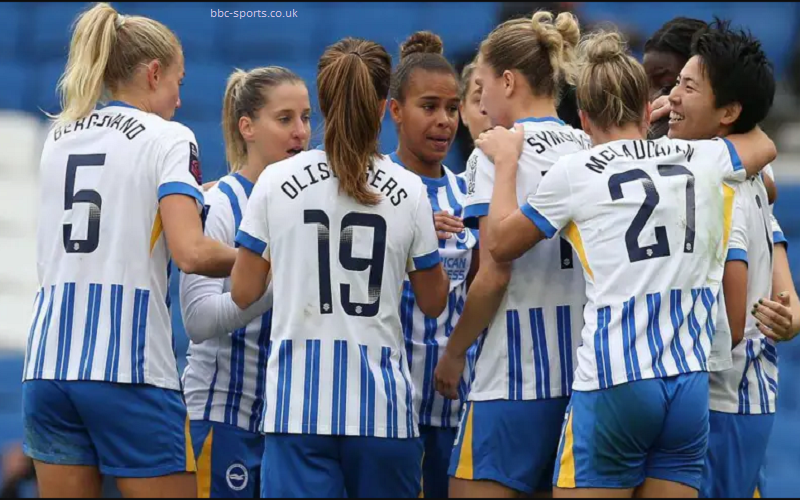Brighton & Hove Albion’s chief executive, Paul Barber, has raised concerns about the impact of pitch surfaces on female footballers’ injuries. He suggests that women’s football may require different pitch types to minimize risks and improve player safety. Brighton is currently researching various surfaces as part of its plans for a dedicated stadium for its Women’s Super League (WSL) team.
The Need for Different Pitch Surfaces
Barber believes that pitches designed for male athletes may contribute to injuries among female footballers. He has called for more in-depth research to examine the correlation between playing surfaces and injury rates. Brighton is partnering with local universities to study pitch conditions and determine the best surface for their new women’s stadium.
“If pitch surfaces are contributing [to injuries], is that because we are preparing them for male athletes?” Barber questioned at a Women in Football event.
The club is working on a detailed plan to ensure their new women’s stadium has a pitch suited specifically to female players. Barber emphasized that this initiative is about showing equal respect to female athletes as to their male counterparts, including providing high-quality playing surfaces.
Comparing Injury Rates in Men’s and Women’s Football
Studies indicate that female footballers are at a higher risk of specific injuries compared to their male counterparts. One of the main concerns is the frequency of anterior cruciate ligament (ACL) injuries in women’s football, which is significantly higher than in men’s football.
| Injury Type | Women’s Football (%) | Men’s Football (%) |
|---|---|---|
| ACL Injuries | 4.6% | 1.9% |
| Muscle Strains | 15.3% | 10.1% |
| Ankle Sprains | 12.1% | 8.5% |
Experts suggest that factors such as differences in muscle strength, joint flexibility, and biomechanics contribute to these disparities. However, pitch conditions may also play a crucial role, necessitating a review of surface preparation for women’s matches.
Brighton’s Plans for a Purpose-Built Women’s Stadium
Brighton & Hove Albion is finalizing an agreement on a new stadium location near the men’s Amex Stadium. The new venue aims to provide optimal playing conditions, ensuring the best facilities for female athletes.
The planned stadium will cater specifically to women’s football needs, offering amenities such as:
- Breastfeeding rooms
- Baby changing areas
- Buggy parks for prams
“In most football stadiums in our country, we don’t have these facilities because they were not built for female athletes or an audience that follows women’s football,” said Barber.
Financial Implications and Future Sustainability
The Women’s Professional Leagues Limited (WPLL) is proposing changes to the structure of the WSL to boost investment and growth. One such proposal is temporarily scrapping relegation to give club owners more security and encourage investment.
Barber supports open discussions on these proposals, stating, “If that means we need to give owners more security in order to invest faster, we have to consider that. We need to have every argument on the table.”
Currently, many WSL clubs operate at a loss due to high investment in infrastructure and player development. Barber emphasizes the need to make women’s football financially sustainable in the long run.
| Revenue vs. Expenses in WSL Clubs | |———————-|———————-| | Club | Annual Revenue (£m) | | Chelsea Women | 9.5 | | Arsenal Women | 8.7 | | Manchester City Women | 7.9 | | Brighton Women | 3.2 |
Despite these financial challenges, clubs understand that investing in the right areas will lead to long-term success and profitability.
Financial Fair Play in Women’s Football
With rising investments in the WSL, there are discussions about implementing Financial Fair Play (FFP) regulations to ensure clubs operate sustainably. Barber believes in finding a balance between allowing investment and preventing excessive financial losses.
“The key thing is learning as many lessons as we can from the men’s game so we don’t lead football clubs into more precarious positions,” he noted.
Many expect that the upcoming governance bill will introduce parameters around spending in the WSL, similar to the men’s Premier League.
Future of Women’s Football Infrastructure
The push for better facilities, investment, and sustainability in women’s football reflects its rapid growth and increasing popularity. With Brighton leading the way in stadium development, other clubs may soon follow suit, ensuring that female footballers receive the same level of care and professionalism as their male counterparts.
Barber’s advocacy for research into pitch types highlights an often-overlooked aspect of the women’s game, and his efforts could pave the way for significant improvements in player safety and performance across the sport.




